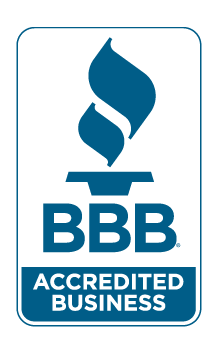One of the most prevalent questions I receive from final expense agents is “…how do deal with lost sales opportunities and Free Looks cancelations.” Most of it is matching your prospect with the wrong carrier and the wrong product quoting too high a face amount with too high of a premium. It’s a simple answer…not so simple solution.
I know this answer sounds different from what you may have been taught “don’t leave money on the table” but, it’s just the opposite. After all, leaving without a completed life insurance application is leaving all the money on the table. The same is true for Free Look cancelations; what’s the point if the client cancels their policy after the first draft. It’s a waste of time for everyone.
The solution resides in your self-talk going into an appointment as well as using a hard close. When final expense agents start to tell themselves “I’m only going to sell $1200 in AP or more, I’m not going to waste my time with anything less” they lose. Taking this posture only thinks of you the agent and not the client.
A Hard Close refers to telling a client “…you need $20,000 in coverage to meet your final expense needs; here’s the cost…” A better approach is to present three face amount quotes. For example, present quotes for $15,000 - $20,000 - $25,000. Place the amount your trying to have the client choose in the middle.
More often then not people will choose the middle price; it’s not too cheap, it’s not too expensive. I always follow up my quotes when presenting by stating “…we can always get a little less or a little more, but you tell me which one works best for you?” Providing options that they choose from is a stronger close.
Going after the highest amount of premium in every household is not a successful strategy when working the final expense market. This is a recipe for chasing business, NSF’s, and free look cancelations resulting in a carrier cancelling your life insurance contract for poor persistency.
When that happens, that carrier is gone from your portfolio for good along with any IMO providing you financing or continue to provide financing with your other carriers. An IMO would rather cut its loses with an agent who writes bad business focusing instead on agents with good persistency. A lack of carrier financing will put most agents working in the final expense market out of business.
There are a few things we can do to combat this dilemma. The first, is to go over a client’s finances before you provide a quote. I started doing this long ago when I work the Final Expense market. Doing a quick budget by asking your client some questions tells you and them how much they can afford.
Every client that is retired is working on a fixed income. Knowing how much that is every month is the first question. Then ask about the basic expenses; rent/mortgage, utilities, phone, cable, car & insurance, groceries, and credit card payments.
Taking that number minus their income lets you and them know what they have to work with. Your goal should be keeping the premium of a new policy within that number leaving some left over. Don’t take it all. I have walked away from sales when that number is less then zero. Better that then a chargeback.
Second, is using that information to match the right carrier and the right product. Taking into account both what you uncovered during basic field underwriting questions and the available income dollars available for premiums tells you the carrier(s) and the face amount they’ll qualify for.
Realizing what your income needs are is the third step to success. Start with your goals, aside from your basic needs, are you trying to buy a new car, need more income, saving for a new house, etc. Break down your goals into small opportunities.
If your goal is $150,000 a year in income, from your life insurance business, how much premium do you need to sell each quarter, each month? How many leads do you need to turn into appointments? How many appointments do you need to reach your goals?
To get to $150,000 you need to sell $15,000 a month or average $3488 per week which is roughly 4 new applications a week. That sounds more attainable, but if you reach that weekly goal should you take the rest of week off? Experience has taught me absolutely NOT! Why? Because the next week could result in less than a thousand dollars in sales.
We also need to take into account some chargebacks. They will happen it’s part of our business. The information in this article is designed to mitigate those to the smallest amount. Keeping your persistency to 80% is good, therefore, $3488 in weekly sales average is after you’ve written applications against any chargeback amount.
The same mindset holds true if I reached my monthly goal in two or three weeks because next month might only yield $7000. Over the course of year, the average premium in either final expense or mortgage protection is $950 in AP.
That includes applications that are $360 AP and those that are $2000 AP. In any given year we work around 10 months when you consider the holidays and a vacation. So, when I figure out my goals, I use only 10 months of sales not 12. I still work in months 11 & 12, however, that income I consider to be bonus money for vacations and holiday spending.
Lastly, it will always boil down to matching the goals of your client to the face amount and premium of the life insurance policy. Educate your client on how the policy will meet their goal for final expenses. Closing more sales is what is going to get you to your goal not 5 or 10 points in a carrier contract.© Copyright Legacy Secure on MI Inc






